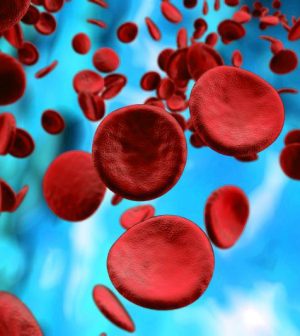- Navigating Your Midlife Crisis: Embracing New Possibilities
- City Raccoons Showing Signs of Domestication
- Mapping the Exposome: Science Broadens Focus to Environmental Disease Triggers
- One Week Less on Social Media Linked to Better Mental Health
- Your Brain Changes in Stages as You Age, Study Finds
- Some Suicide Victims Show No Typical Warning Signs, Study Finds
- ByHeart Formula Faces Lawsuits After Babies Sickened With Botulism
- Switch to Vegan Diet Could Cut Your Greenhouse Gas Emissions in Half
- Regular Bedtime Does Wonders for Blood Pressure
- Dining Alone Could Mean Worse Nutrition for Seniors
Secondary Tumors After CAR-T Cancer Therapies Are Rare: Study

CAR-T cell therapy to treat blood cancers is safer than previously thought, with little risk that the immunotherapy will create secondary cancers, a new study finds.
The U.S. Food and Drug Administration issued a warning in November 2023 about a risk of secondary cancers that might be associated with CAR-T cell therapy.
But a study of more than 700 patients treated at Stanford University found that the risk was just over 6% in the three years after a cancer patient received CAR-T cell immunotherapy, researchers reported June 13 in the New England Journal of Medicine.
That risk is roughly similar to that of patients who receive stem cell transplants rather than CAR-T cell therapy to treat their blood cancers, researchers said.
“These are lifesaving therapies that come with a very low risk of secondary cancers. The challenge lies in how to predict which patients are at higher risk, and why,” said researcher Dr. Ash Alizadeh, a professor of medicine at Stanford.
In CAR-T cell therapy, immune cells called T-cells are harvested from a patient and genetically engineered to more efficiently seek out and kill cancer cells.
This therapy typically is used to treat blood cancers like leukemia, lymphoma and multiple myeloma, according to the American Cancer Society.
But one concern is that if the genetic engineering is imprecise, the T-cells meant to attack a person’s cancer might instead become cancerous themselves.
To see whether this risk is real, the research team analyzed data drawn from Stanford Medicine’s large bank of tissue and blood samples from people receiving CAR-T cell therapy.
They found no evidence that the T-cells responsible for some patients’ secondary cancers were the T-cells that had been engineered for CAR-T cell therapy. The T-cells were distinct on both genetic and molecular levels.
But in one patient who rapidly developed and died from a T-cell lymphoma, researchers found a clue that could explain why secondary cancers sometimes happen.
Both sets of T-cells in that patient — the CAR-T cells and the T-cells responsible for the secondary cancer — had been infected with a virus known to play a role in cancer development. The patient also had a history of autoimmune disease prior to a cancer diagnosis.
“We compared protein levels, RNA sequences and DNA from single cells across multiple tissues and time points to determine that the therapy didn’t introduce the lymphoma into this patient; instead it was already brewing in their body at very low levels,” Alizadeh said in a Stanford news release.
This suggests that secondary cancers might be prompted by chemotherapy done prior to CAR-T cell therapy, which suppresses a person’s immune response to such viruses, researchers said. They also might be due to some other side effect from the treatment, rather than genetic engineering gone wrong.
“These results may help researchers focus on the immune suppression that can precede and often follows CAR-T cell therapy,” said researcher Dr. David Miklos, chief of bone marrow transplantation and cellular therapy at Stanford Medicine.
More information
The American Cancer Society has more about CAR-T cell therapy.
SOURCE: Stanford University, news release, June 12, 2024
Source: HealthDay
Copyright © 2025 HealthDay. All rights reserved.










